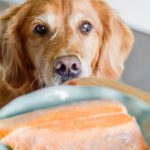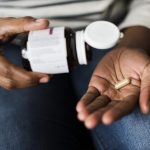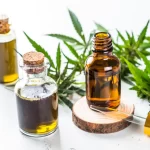Vitamin D is an essential nutrient that provides countless health benefits, yet many people lack sufficient levels. One natural and inexpensive way to obtain vitamin D is through sun exposure. However, overexposure can also lead to sunburn and potentially skin damage or cancer down the road if not done judiciously. With a bit of knowledge, one can easily reap the reward of UVB rays without risk. Here are some guidelines to sensibly obtain vitamin D from the sun in the safest, most efficient manner possible.
Table of Contents
Know Your Skin Type
The first step is determining your natural skin coloration and propensity to burn. Fair-skinned individuals with lighter hair and eye colors require less direct sunlight compared to those with darker skin that tan more easily. Pay heed to seasons too – winter sun won’t produce the same effect as summer due to angle and intensity. Start with modest 5-10-minute increments a few times weekly to gauge your individual threshold. Gradual, mindful exposure helps prevent overexposure perplexity.
Maximize The Midday Sun
The strongest UVB rays peak roughly between 10 am and 3 pm daily. Aim to get brief sun exposure regularly during these prime opportunity windows when possible. Understandably, responsibilities and daily routines can create inconsistencies that lead to fluctuations. However, adhering to the mid-day sun maximizes results while minimizing exposure duration and attendant risks. Weather too directly impacts achievable amounts.
Limit Protective Clothing And Sunscreen
To let your skin properly absorb the beneficial UVB rays, restrict dense clothing or liberal sunscreen usage to exposed skin surfaces. Light, loose garments do not notably impede the sun when covering larger portions briefly. And a modest amount of broad-spectrum sunscreen on very sensitive areas remains advisable. Full-body application, however, could convolute vitamin D synthesis benefits down the line. Moderation prevents paradoxical outcomes.
Expose Major Skin Surfaces
Facial exposure alone often results in incomplete results. Wider body surfaces spanning arms, legs, back, and abdomen more thoroughly enable your skin to generate natural vitamin D. Standing or sitting outside briefly with a shirt off (if male) or light sundress (if female) capitalizes on these critical regions. Going shirtless too long in intense summer sun may parch sun kissed skin, of course, so moderation stays key. Diffuse, sensible body sun exposure gets the job done right.
Provide Recovery Time
Just as buildup requires dedicated sun periods, recovery follows to allow your skin to replenish itself without complications. One to two days between sessions, with protective measures in very intense climates, gives skin a chance to process vitamin D without continuing damage. Overly frequent or prolonged exposures smash together benefits with drawbacks confusingly if recovery remains overlooked. Listen to your body and preserve skin integrity above all other objectives.
Watch For Warning Signs
While a tan may signal natural protection from further burn, redness and blistering indicate overstepping your limits. Revisit duration and intervals if these warning flags appear. Extend recovery as needed for complete healing to preempt flare-ups. Sunburn hurts livelihood and undermines vitamin D yields confusingly in the long run. Paying rapt attention prevents turbulent sun relationships.
Supplement If Needed
It proves difficult to fully meet vitamin D needs through sun alone in cloudy climates like New England. The exact amount derived also varies considerably between people based on individual skin properties and sun habits. Supplementation, especially throughout fall and winter, provides insurance against inadequacies leading to Vitamin D deficiencies down the line. Blood testing helps determine requirements tailored to each person’s distinct makeup. Layering approaches remove all uncertainty.







